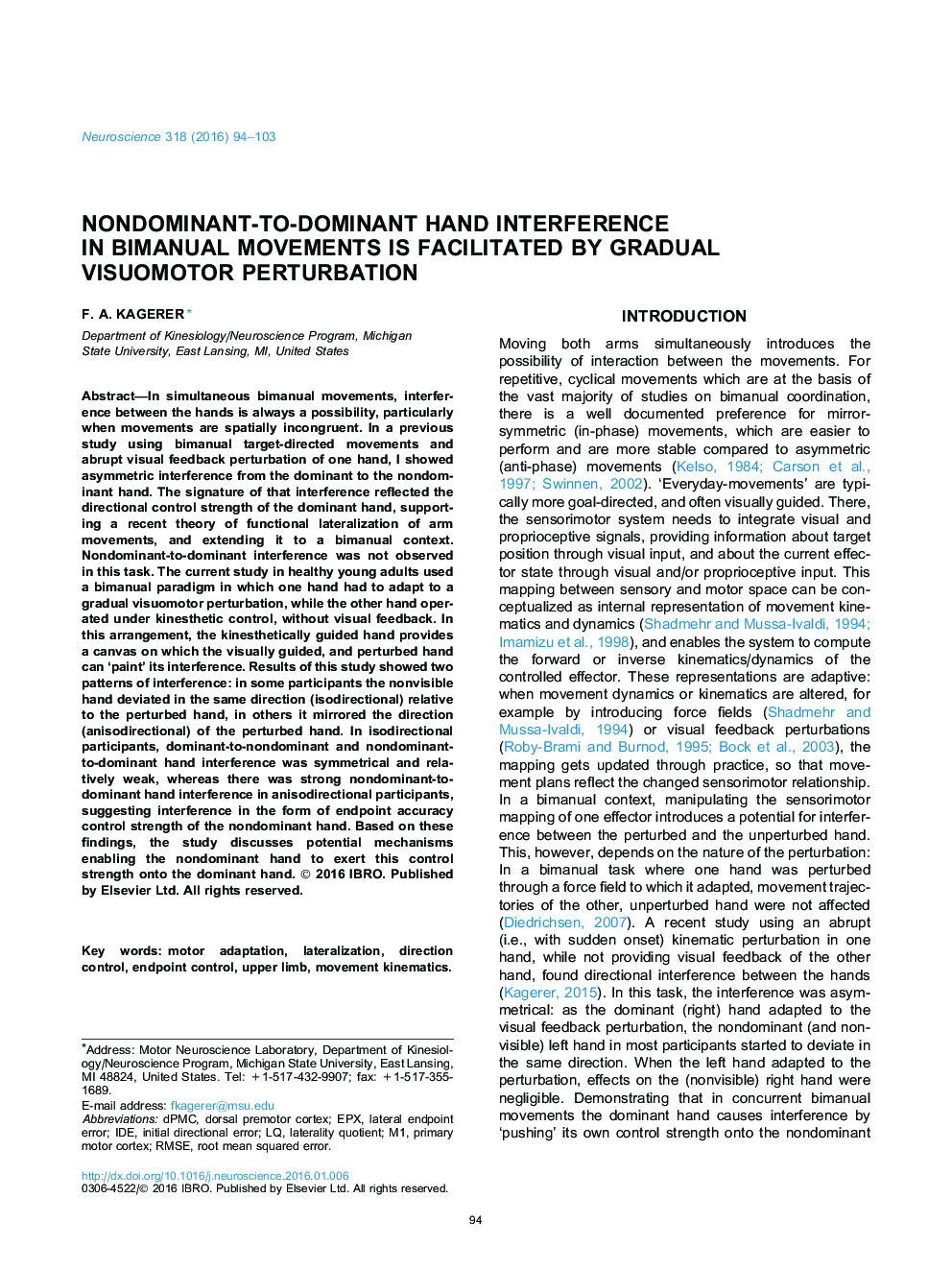| کد مقاله | کد نشریه | سال انتشار | مقاله انگلیسی | نسخه تمام متن |
|---|---|---|---|---|
| 4337368 | 1614758 | 2016 | 10 صفحه PDF | دانلود رایگان |
• Study uses novel bimanual concurrent movement paradigm: one hand visible, contralateral hand nonvisible.
• Results show that gradual visuomotor perturbation of one hand leads to interference from nondominant to dominant hand.
• Results complement previous findings of dominant to nondominant interference during abrupt visuomotor perturbation.
• Findings support recent model of functionally specialized lateralization for arm movements.
In simultaneous bimanual movements, interference between the hands is always a possibility, particularly when movements are spatially incongruent. In a previous study using bimanual target-directed movements and abrupt visual feedback perturbation of one hand, I showed asymmetric interference from the dominant to the nondominant hand. The signature of that interference reflected the directional control strength of the dominant hand, supporting a recent theory of functional lateralization of arm movements, and extending it to a bimanual context. Nondominant-to-dominant interference was not observed in this task. The current study in healthy young adults used a bimanual paradigm in which one hand had to adapt to a gradual visuomotor perturbation, while the other hand operated under kinesthetic control, without visual feedback. In this arrangement, the kinesthetically guided hand provides a canvas on which the visually guided, and perturbed hand can ‘paint’ its interference. Results of this study showed two patterns of interference: in some participants the nonvisible hand deviated in the same direction (isodirectional) relative to the perturbed hand, in others it mirrored the direction (anisodirectional) of the perturbed hand. In isodirectional participants, dominant-to-nondominant and nondominant-to-dominant hand interference was symmetrical and relatively weak, whereas there was strong nondominant-to-dominant hand interference in anisodirectional participants, suggesting interference in the form of endpoint accuracy control strength of the nondominant hand. Based on these findings, the study discusses potential mechanisms enabling the nondominant hand to exert this control strength onto the dominant hand.
Journal: Neuroscience - Volume 318, 24 March 2016, Pages 94–103
